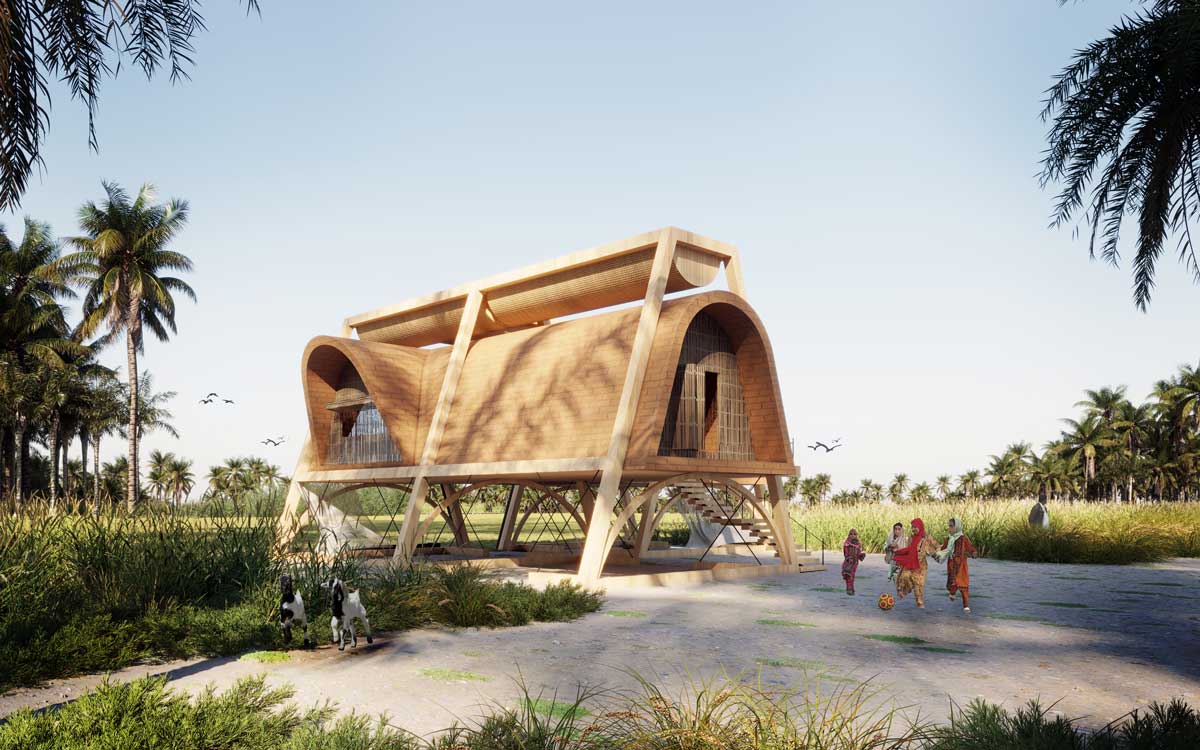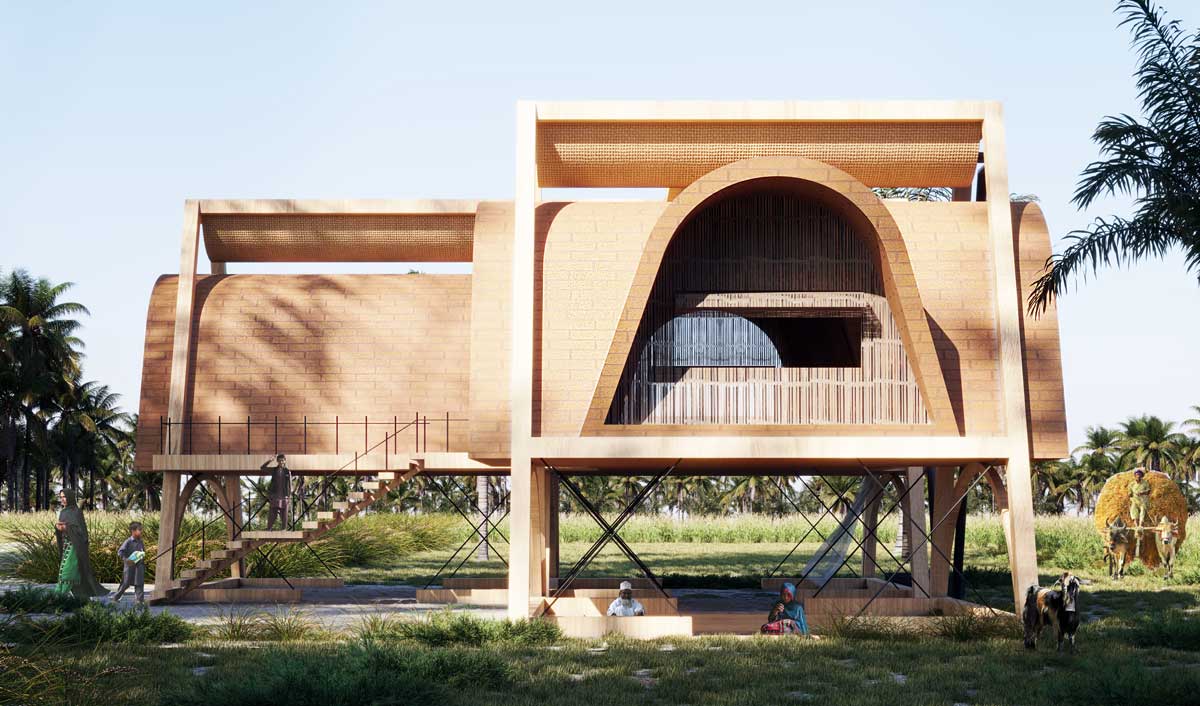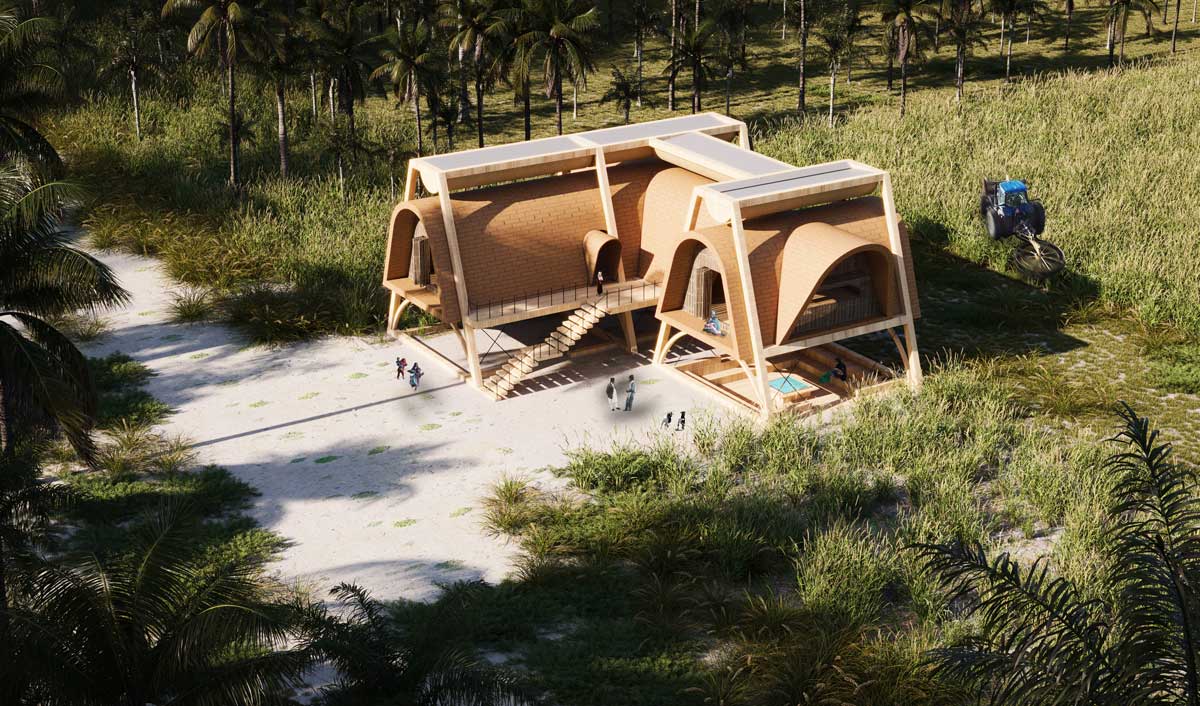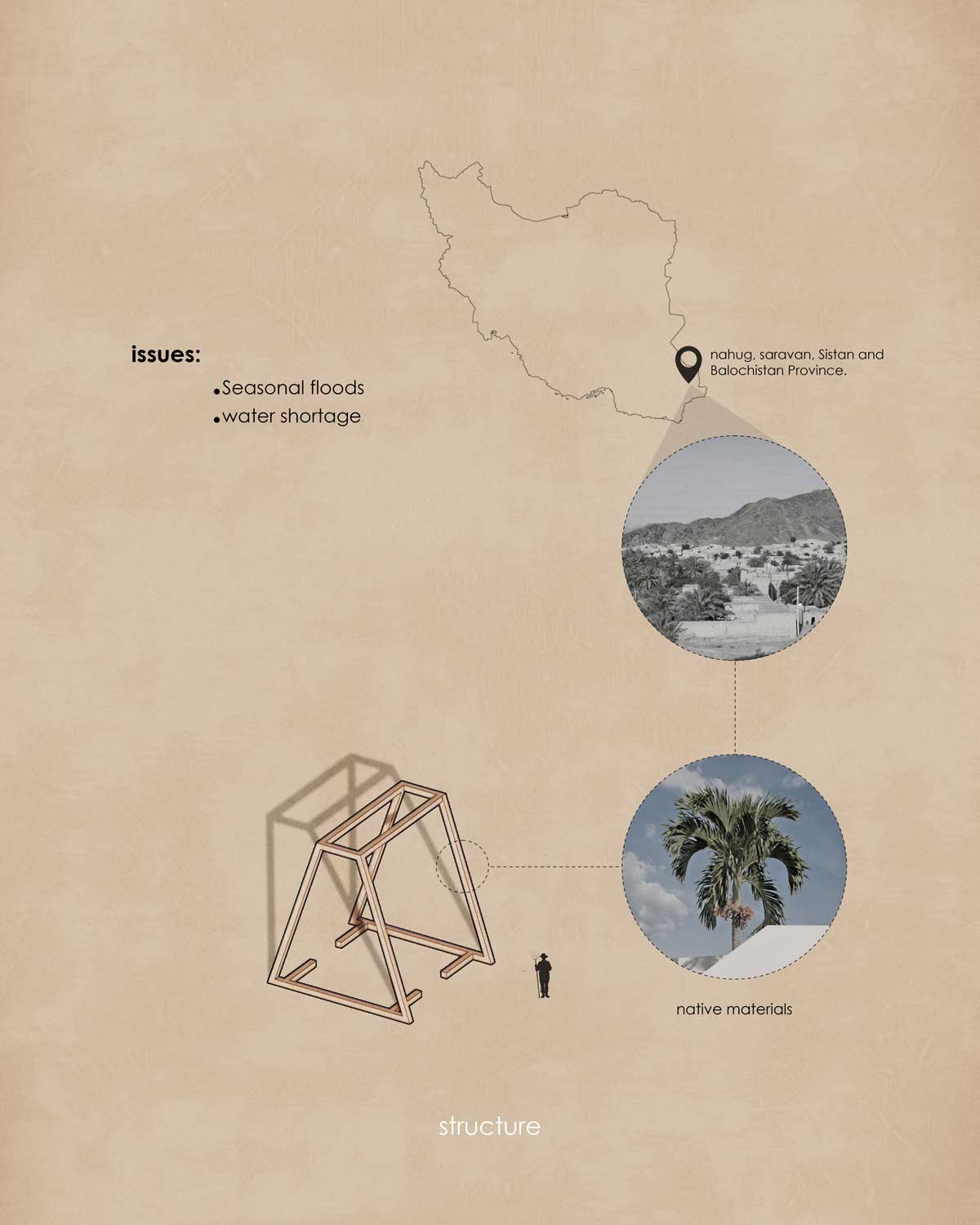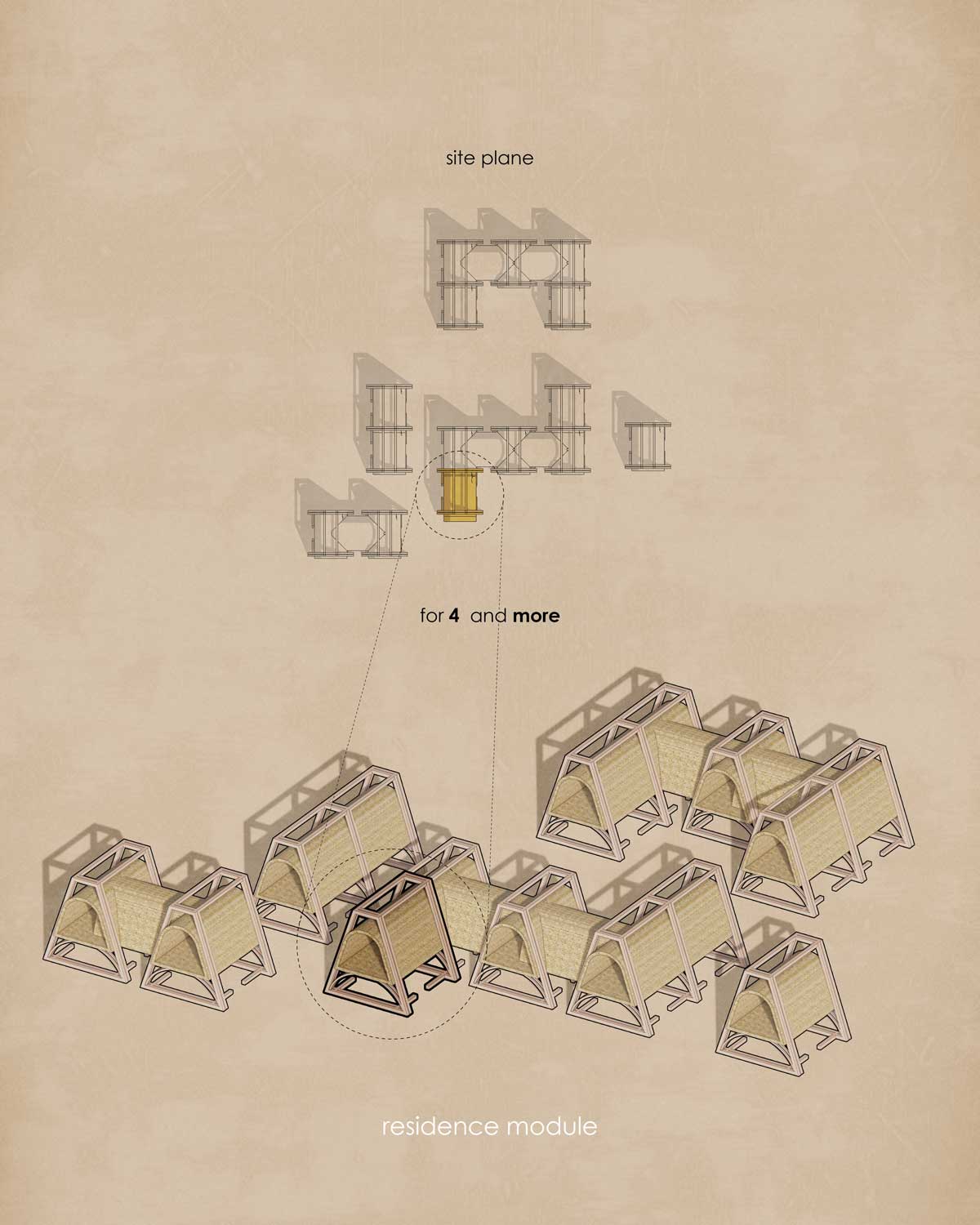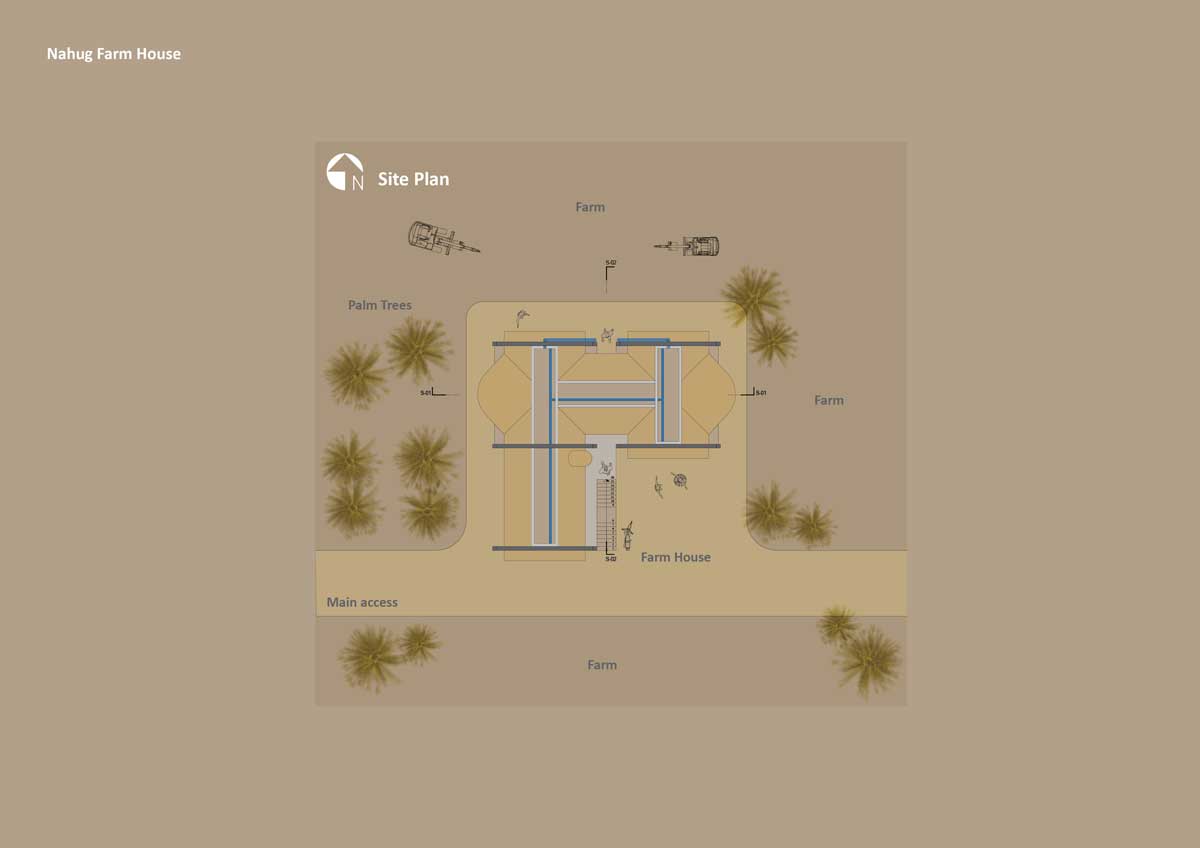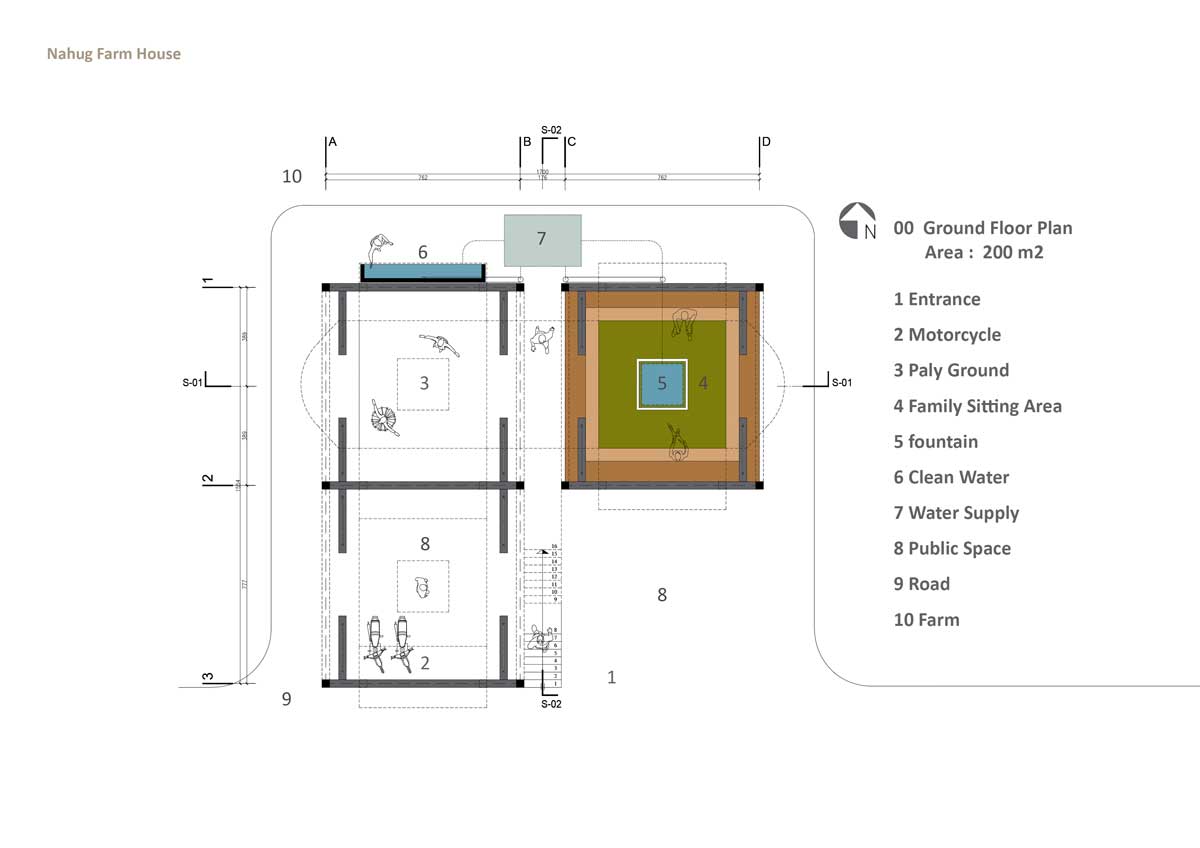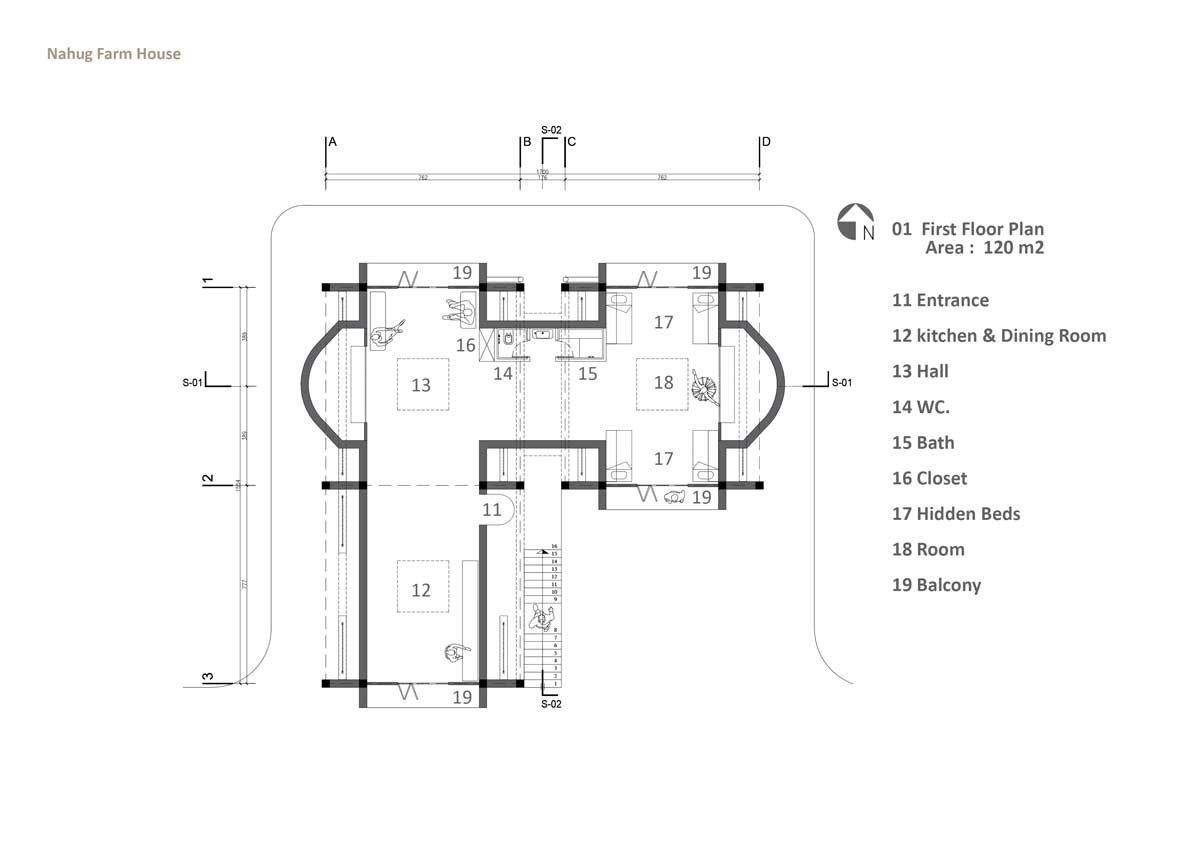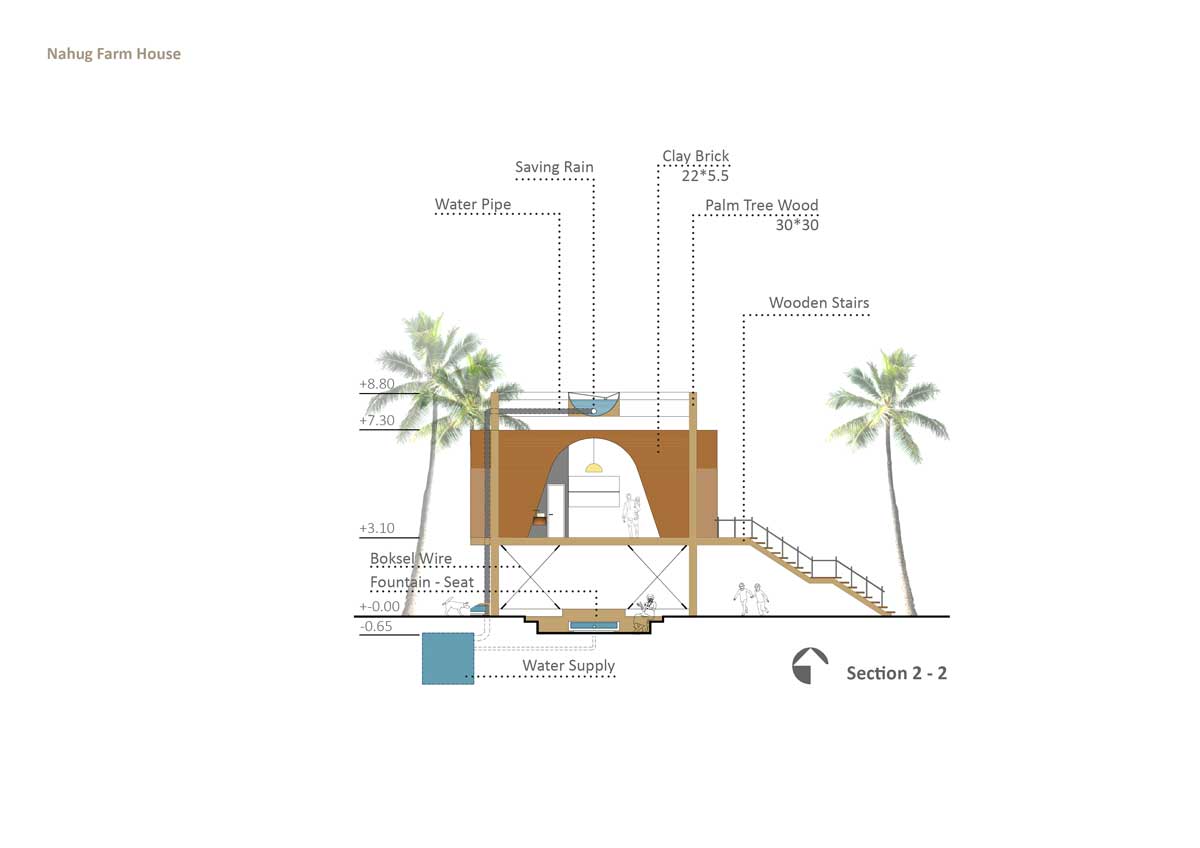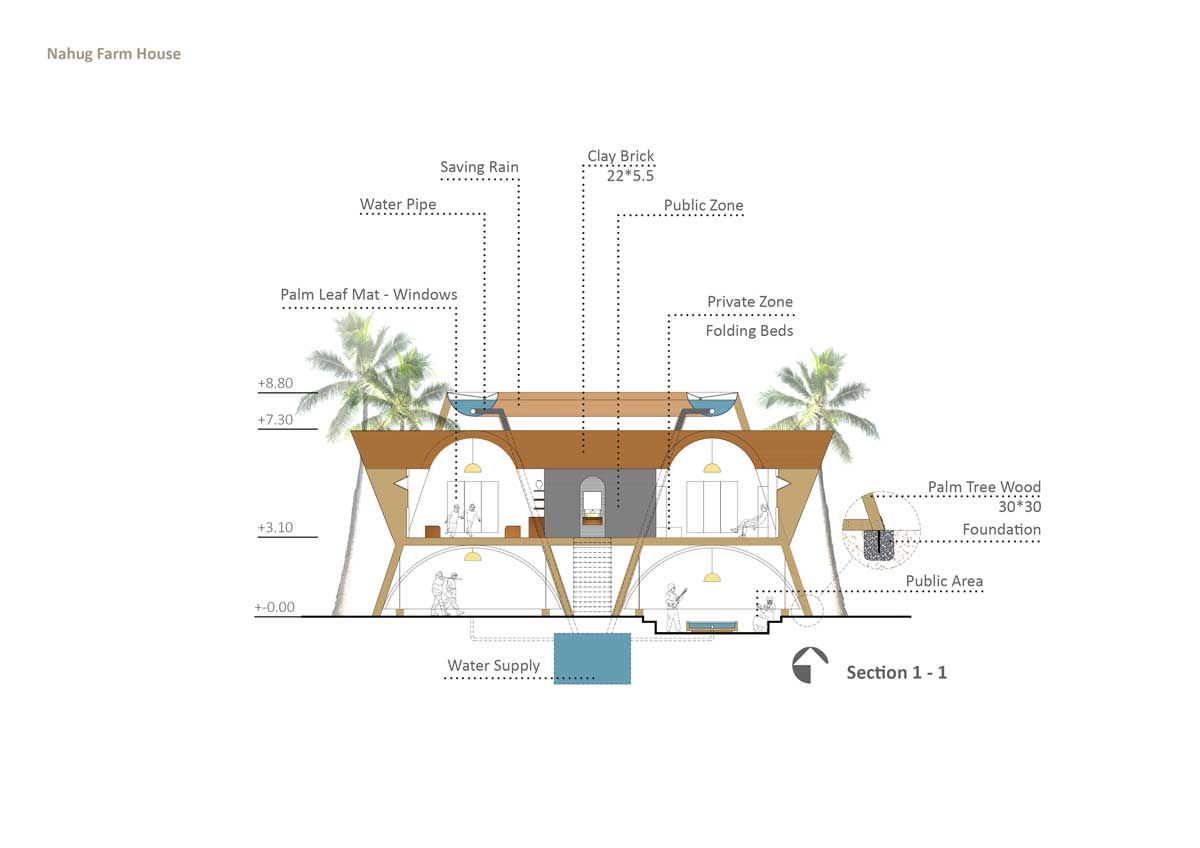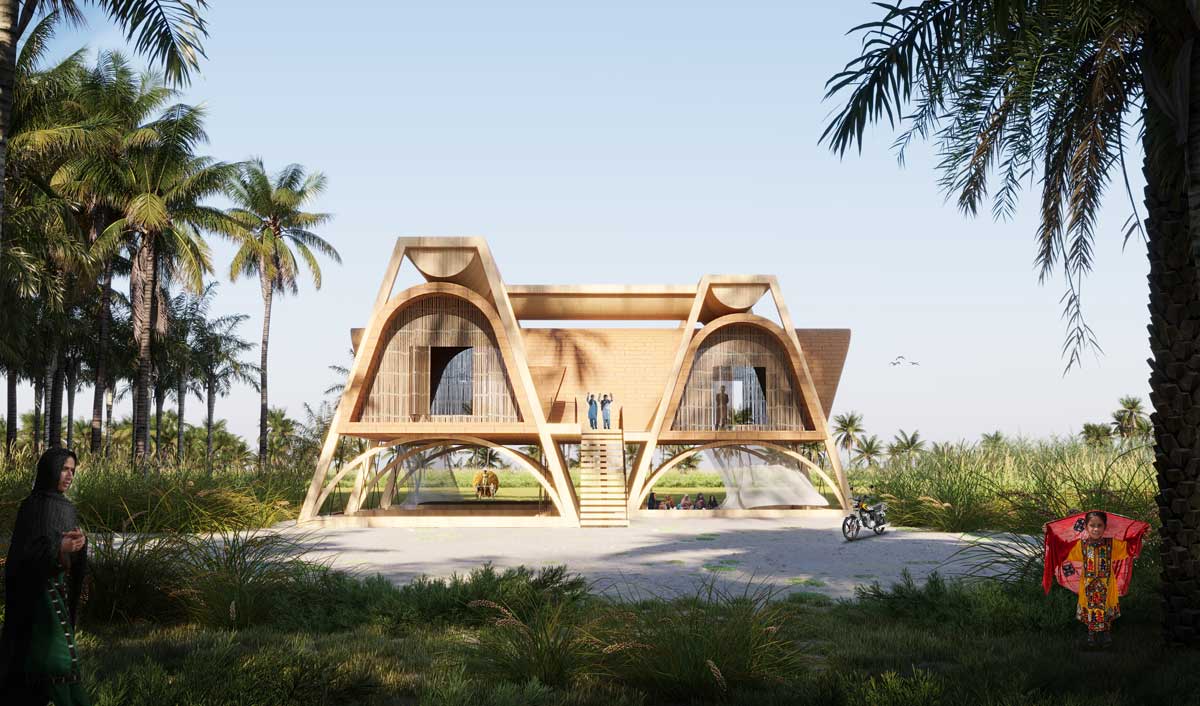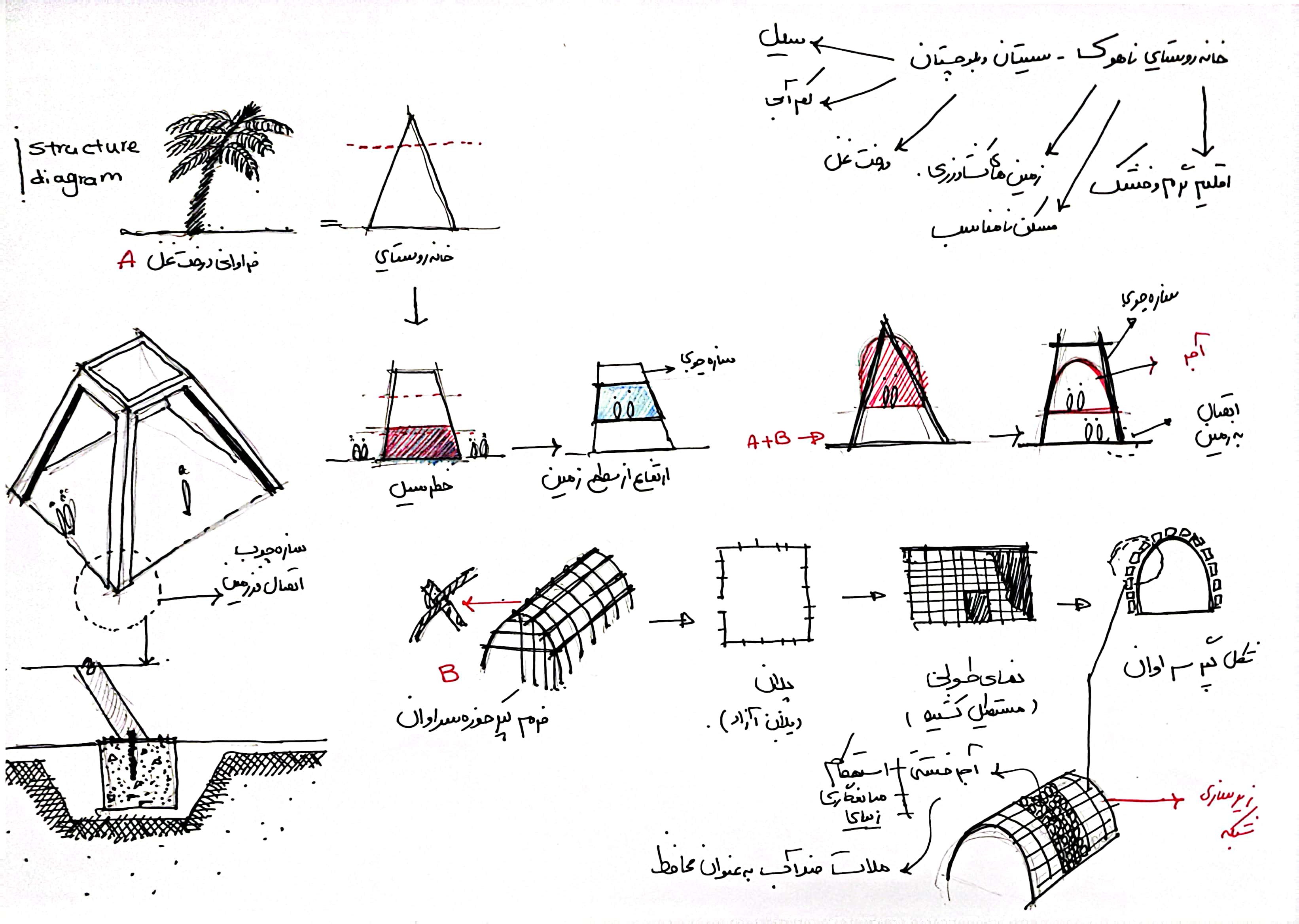- Area: 120 m2
- Location: Nahug, Sistan & Balochestan, Iran
- Type: Villa
- Status: Idea
- Scale: Small
Nahug village is one of the best natural attractions of Saravan in the southeast of Iran. This area is located in the middle of a spectacular valley with a hot and dry climate, and its seasonal river is active in the rainy years. In recent years, drought and floods have destroyed the agricultural lands of this green village. Now the question is raised: How can the house of rural farmers be designed and built with a new and efficient model with contemporary architectural thinking and also by using local architectural traditions of the region? The idea of the farmhouse design was formed based on the duality of drought and flood. How can you stay safe when a flood occurs and the house can be a safe shelter? At the same time, how can rainwater be collected in rainy seasons and used for drinking, washing, agriculture, and animal usage? Paying attention to the high speed of construction and cost-effectiveness made a module to be considered for building a house. In this way, each household can decide and participate in the design and arrangement of the house based on the number. In the first step of the design, a structure made of date palm wood (considering its abundance and indigenous nature in the Nahug region) was considered as the primary module with a triangular shape (symbolic of a house). Then, in the formal layer of the house space, the idea was taken from the appearance of the hut in the Saravan region (a wooden-style accommodation with a rectangular plan and a crescent-shaped facade). To increase the strength and also keep the interior cool, a domed form made of compressed brick was considered, and the final layer is insulated with waterproof mortar to prevent moisture from entering. By raising the brick domed space above the ground, the house is situated in the middle of the wooden structure, which protects the residents in the event of a flood. This creates a shaded and cool courtyard under the domed space, which is a suitable place for socialization and interaction among villagers, with a beautiful view of the agricultural lands. The dimensions of each module in the spatial program are 88 meters at the base of the triangle. Since the brick domed structure is located in the center of the wooden triangular structure, the usable area of each module is 40 square meters (58). Accordingly, these modules are arranged side by side, considering the needs and number of families. For environmental sustainability and safe water storage, a tank for collecting rainwater on the roof of the house, coordinated with the module plan, was considered. This tank has a reverse crescent-shaped form made of galvanized sheet metal, with a sloped and insulated cover made of woven reed. By distancing the tank from the brick domed space, air circulation helps cool the house and prevent water evaporation. Assuming the house is designed for 4 people and using 3 modules (120 square meters), the water tank has a capacity of 35,000 liters. The water inside the tank is transferred to the underground through two pipes for purification, storage, and distribution for household and agricultural uses. The interior spaces on the north and south sides have vertical windows made of woven palm tree branches, so that in summer, air circulation can occur, and in winter, by keeping them closed, the entry of cold air is prevented. On the east and west sides, the crescent-shaped form with protruding elements creates shading. The openings in this side are horizontal and act as a frame towards the lush landscape and palm trees. In summary, the key features of the design idea for the rural agricultural houses in Nahavuk are:


